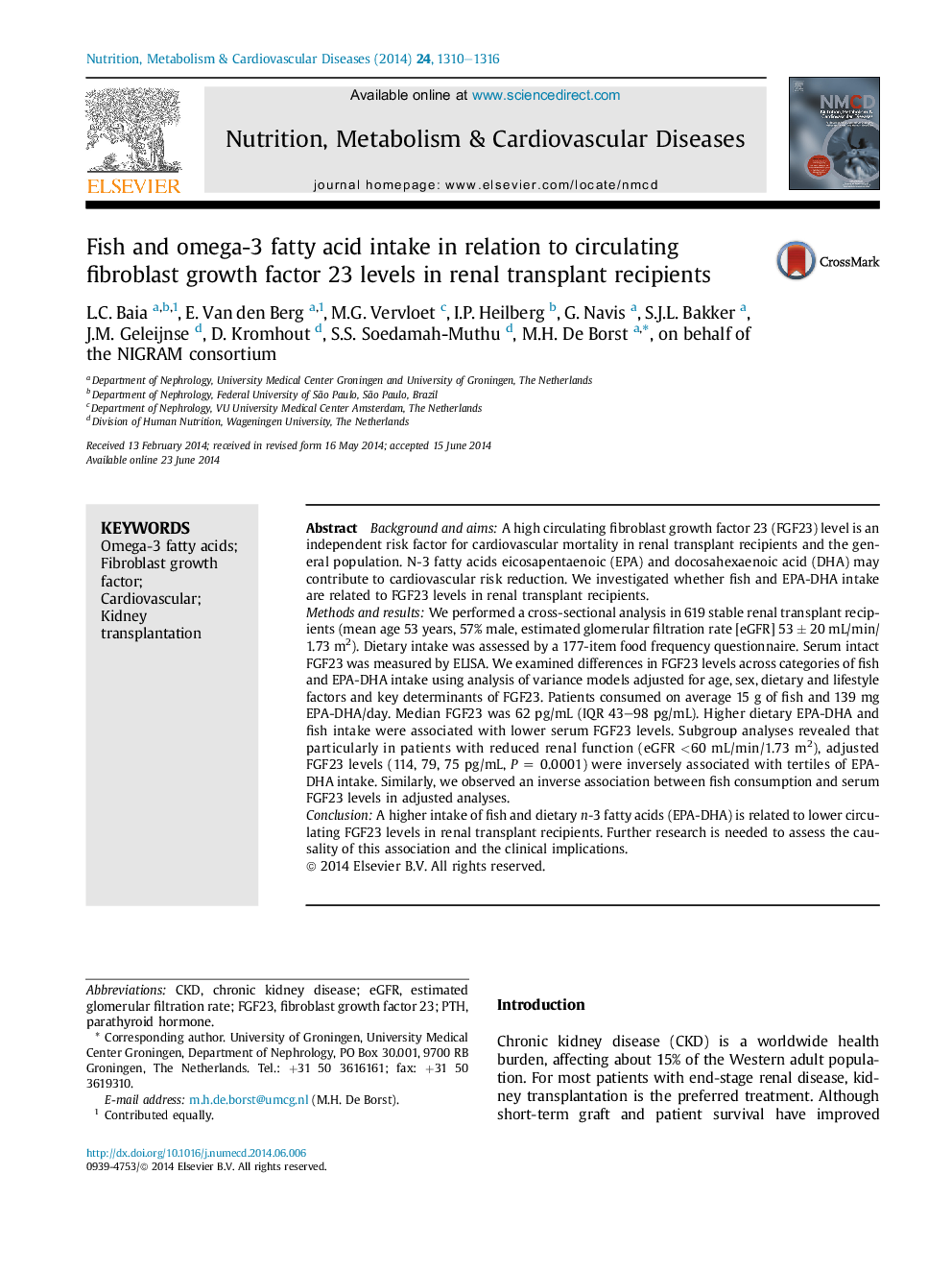| Article ID | Journal | Published Year | Pages | File Type |
|---|---|---|---|---|
| 5996531 | Nutrition, Metabolism and Cardiovascular Diseases | 2014 | 7 Pages |
Background and aimsA high circulating fibroblast growth factor 23 (FGF23) level is an independent risk factor for cardiovascular mortality in renal transplant recipients and the general population. N-3 fatty acids eicosapentaenoic (EPA) and docosahexaenoic acid (DHA) may contribute to cardiovascular risk reduction. We investigated whether fish and EPA-DHA intake are related to FGF23 levels in renal transplant recipients.Methods and resultsWe performed a cross-sectional analysis in 619 stable renal transplant recipients (mean age 53 years, 57% male, estimated glomerular filtration rate [eGFR] 53 ± 20 mL/min/1.73 m2). Dietary intake was assessed by a 177-item food frequency questionnaire. Serum intact FGF23 was measured by ELISA. We examined differences in FGF23 levels across categories of fish and EPA-DHA intake using analysis of variance models adjusted for age, sex, dietary and lifestyle factors and key determinants of FGF23. Patients consumed on average 15 g of fish and 139 mg EPA-DHA/day. Median FGF23 was 62 pg/mL (IQR 43-98 pg/mL). Higher dietary EPA-DHA and fish intake were associated with lower serum FGF23 levels. Subgroup analyses revealed that particularly in patients with reduced renal function (eGFR <60 mL/min/1.73 m2), adjusted FGF23 levels (114, 79, 75 pg/mL, P = 0.0001) were inversely associated with tertiles of EPA-DHA intake. Similarly, we observed an inverse association between fish consumption and serum FGF23 levels in adjusted analyses.ConclusionA higher intake of fish and dietary n-3 fatty acids (EPA-DHA) is related to lower circulating FGF23 levels in renal transplant recipients. Further research is needed to assess the causality of this association and the clinical implications.
